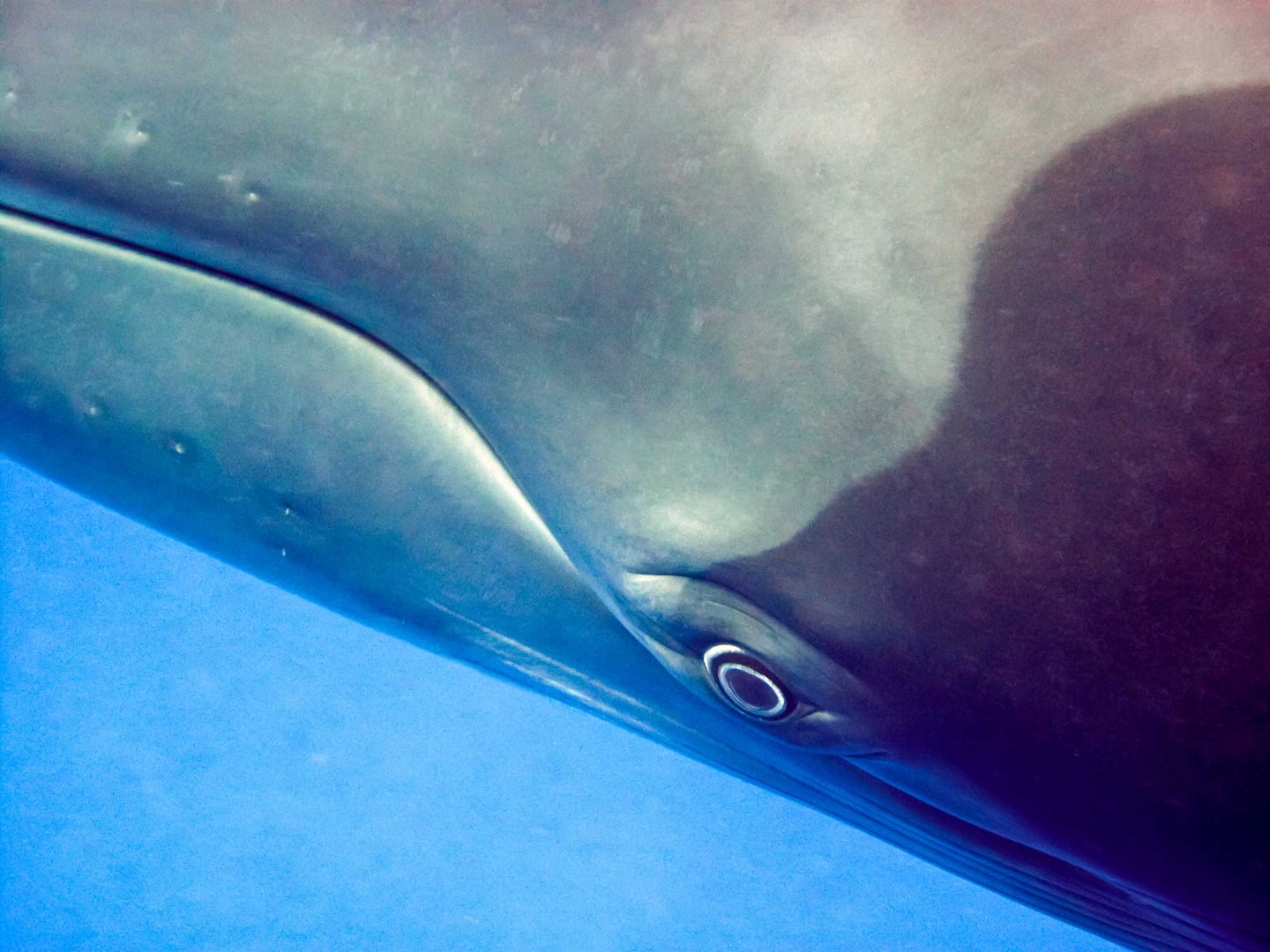Scientists are reconstructing what ancient whales saw to look into the past
Reconstructing the visual proteins from whales’ early ancestors suggests they were deep-sea divers. The clever technique could help scientists understand the capabilities of other extinct species.

This article was originally featured on Hakai Magazine, an online publication about science and society in coastal ecosystems. Read more stories like this at hakaimagazine.com.
It’s nearly impossible to know how extinct animals behaved; there’s no Jurassic Park where we can watch them hunt or mate or evade predators. But a developing technique is giving researchers a physiological cipher to decrypt the behavior of extinct species by reconstructing and analyzing extinct animals’ proteins. This molecular necromancy can help them understand traits that don’t preserve in the fossil record.
In the most recent example of this technique in action, scientists led by Sarah Dungan, who completed the work while a graduate student at the University of Toronto (U of T) in Ontario, have revived the visual pigments from some of cetaceans’ earliest ancestors. The work has given Dungan and her colleagues a new look into how proto-cetaceans would have lived in the immediate aftermath of a crucial evolutionary juncture: the time roughly 55 to 35 million years ago when the animals that eventually became whales and dolphins abandoned their terrestrial lifestyles to return to the sea.
Dungan’s fascination with whale evolution began when she was eight. As a kid, she loved spending time in the water and learning about marine biology. Her dad told her in passing that the ancestors of modern whales once lived on land. The notion that an animal could transform from living entirely out of water to not being able to live outside it stuck with her. Learning about the evolutionary transition modern whales took—from ocean to land and back again—“totally blew me away,” she says. “The paper is the end of a story that started when I was really young.”
In 2003, researchers at U of T pioneered a technique to assemble extinct animals’ ancient visual proteins. They’ve applied the technique across the animal kingdom, learning more about how extinct species saw the world. But studying extinct cetaceans is especially interesting because the land-to-ocean transition transformed the animals’ visual realms.
In this study, the researchers compared rhodopsin, the visual pigment responsible for dim-light vision, from the animals that bookended the land-to-ocean transition. They focused on the first cetacean, which lived 35 million years ago and probably swam using powerful muscles in its tail, and the first whippomorph (one of a group of animals that includes cetaceans and hippos), which lived 55 million years ago.
Scientists haven’t discovered the fossils for the two extinct species yet. For that matter, they can’t even say precisely what species they are. But Dungan’s technique can infer ancient protein sequences even without this information. The approach follows the evolutionary breadcrumbs left in modern animals’ proteins to figure out what the ancient forms would have looked like, even without the bones of the species themselves. By comparing the presumed proteins of the first whippomorph and the first cetacean, the scientists can glean the subtle differences in their vision. These differences in vision could reflect differences in the animals’ behaviors.
“There’s only so much you can learn from fossil evidence,” Dungan says. “But the eye is a window between the organism and its environment.”
Using an evolutionary tree and the known rhodopsin structures from modern cetaceans, Dungan and her team built a model to predict the ancient animals’ variants. They manufactured the visual pigments in the lab by genetically modifying cultured mammalian cells and tested the light they are most sensitive to. The scientists found that compared with the ancient whippomorph, the extinct cetacean was likely more sensitive to blue wavelengths of light. Blue light penetrates deeper into water than red, so modern deep-sea denizens, including fishes and cetaceans, have blue-sensitive vision. The finding suggests the extinct cetacean was comfortable in the deep sea.
The scientists also found that the ancient cetaceans’ version of rhodopsin adapts quickly to the dark. Modern cetaceans’ eyes quickly adjust to dim light, helping them move between the bright surface where they breathe and the dark depths where they feed. This finding is “what really sealed the deal,” Dungan says.
Based on their findings, the scientists think early cetaceans probably dove to the ocean’s twilight zone, between 200 and 1,000 meters. Eyesight was vital during dives. Ancient cetaceans couldn’t echolocate like dolphins, so they relied more heavily on vision.
The finding is surprising, says Lorian Schweikert, a neuroecologist at the University of North Carolina Wilmington who wasn’t involved in the study. She thought the first cetaceans would have stayed near the surface. “Started from the bottom now we’re here,” she jokes, alluding to Drake’s hit song.
Schweikert says that studying eye physiology is a reliable way to infer an animal’s ecology because visual proteins don’t change much over time. The rare changes almost always correlate with environmental shifts.
The most important conclusion of Dungan and her colleagues’ work, says Schweikert, is that it further clarifies the order in which cetaceans’ extreme diving behaviors evolved. The rhodopsin research builds on earlier work that painted a similar picture. In a previous study, researchers reconstructed ancient myoglobin and showed that early cetaceans “supercharged” their muscles’ oxygen supply while they held their breath—further evidence that they were capable divers. Another study, this time on ancient penguins, showed that when the birds had their own transition to marine life, their hemoglobin evolved mechanisms to more efficiently manage oxygen.
Dungan and her colleagues are now channeling their molecular Ouija board to resurrect rhodopsin from the earliest mammals, bats, and archosaurs. This will help them understand how nocturnality, burrowing, and flight evolved.
The approach is “just really fun,” Schweikert says. “You’re trying to look into the past to understand how these animals evolved. I love that we can look at vision to solve some of these problems.”